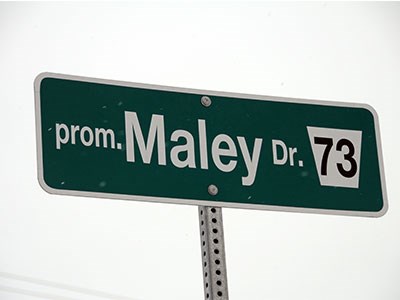Two of Sudbury's largest road construction projects have remained in a state of economic and political limbo for years.
The first, and largest, is the Maley Drive extension the city has discussed since the 1980s.
At a cost of roughly $125 million, the Maley Drive Extension would complete the road ring around the city, allowing heavy trucks headed west or east on Highway 17 to bypass downtown Sudbury and other busy roads, saving wear and tear on the city's already bumpy streets. It would also offer motorists a more convenient route to get to different parts of the city — the Valley from Sudbury, for example — easing traffic congestion at some major intersections.
To complete the project, the City of Greater Sudbury would need to secure a third of the funding each from the provincial and federal governments, respectively.
In August the province committed $26.7 million to fund the project. But that leaves the city roughly $15 million short of what it had hoped to receive from the project.
The city has committed to its share of the project funding, and while the federal government has not announced any specific plans for Maley Drive, it has committed to a $14-billion national infrastructure fund to support major road building projects.
The project would widen Maley Drive to four lanes, from the Falconbridge Highway to Barrydowne Road. Then a new road would connect to Maley to Collège Boréal at the Lasalle Extension, which would also be widened to four lanes until it links up with Municipal Road 35, leading to Azilda.
Fully completed, the extension would divert about 10,000 vehicles a day from The Kingsway and Lasalle Boulevard, as well as significantly reduce the wear and tear heavy industrial trucks inflict on local roads.
Tony Cecutti, Greater Sudbury's general manager of infrastructure, has said the Maley Drive extension will benefit the city tremendously.
“The heavy industrial truck traffic is going to want to go there,” Cecutti said. “It will be an easier route will less traffic (signals). They won't be competing with domestic traffic by commercial areas like malls that tends to slow traffic down.”
Cecutti said the road ring around the city could be completed even with the partial funding, but four-laning the entire stretch would have to be done later.
“The full benefit as defined in the (environmental assessment) won't be realized until there's four lanes along the entire length of the road,” he said. “However, that doesn't mean we wouldn't be able to divert a substantial amount of truck traffic in the initial phases.”
Two environmental assessments have already been completed for Maley, although one may need updating by the time construction begins.
“We're excited that the province announced that it was staying in the budget,” Cecutti said. “I think it shows the province realizes there's benefits to (Maley) beyond just our community. They recognize that it's important to sustaining jobs and the economy.
“We're having discussions now with the province to see what exactly that means, and what programs will be put in place.
“It's too early at this stage for provincial staff to know of what it's going to mean ... but we've opened a dialogue now and we're looking forward to advancing that discussion with them, and also with the federal government.”
The second project – planned road improvements for Sudbury's Second Avenue – is much smaller in size, but has drawn resistance from some community members, which has slowed plans to a halt.
The $5.7 million project would rebuild and widen the road, allowing for a new traffic signal and improved access to the Civic Cemetery and a dog park in the area.
But members of the community action network in Sudbury's Minnow Lake neighbourhood, where the road is located, have brought forward environmental concerns regarding the project to the province.
Those complaints, filed by Minnow Lake Community Action Network members John Lindsay and Dot Klein, delayed the project at least a year, when they were filed in the summer of 2014.
Lindsay and Klein's complaints relate to concerns about increased air pollution and storm water runoff that could result from the road and sewer reconstruction project. Lindsay said expanding the road to five lanes from two would triple the amount of untreated stormwater that will find its way into Ramsey Lake.
Klein's complaint was related to increased vehicle exhaust emissions that could result from the project. Both also supported putting in a roundabout at the intersection of Scarlet Drive, instead of a traffic light.
“Second Avenue isn't pretty, but a roundabout would make it prettier,” Lindsay said. “I always like to have a number of opinions before I make a decision. Are we really spending our $5 million or $6 million the right way?”
Dave Shelsted, the city's director of roads, said his staff supports roundabouts for the Maley Drive extension. But that section of Second Avenue is too narrow to put in the two-lane roundabout required to handle the traffic volume, he said.
Second Avenue handles around 15,000 vehicles a day.




